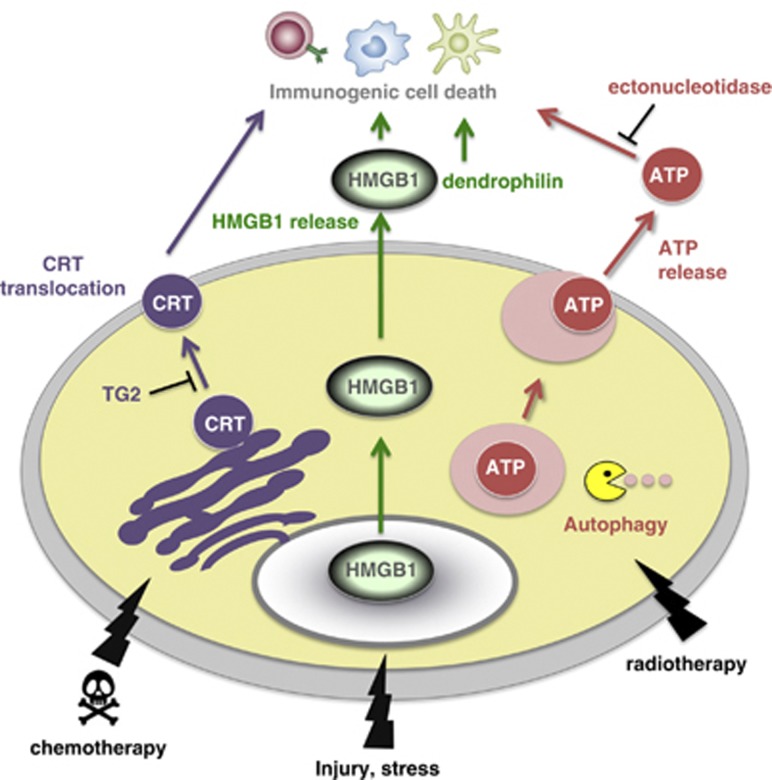Figure 1.
Immunogenic cells death (ICD). Cells can be severely stressed because of an inhospitable environment or condition, or because of tissue injury; they can also be hit by radiotherapy or chemotherapy, which create stress on their own. Cancer cells will eventually die because of treatment, but only if they undergo ICD they will arouse and instruct the adaptive immune system (or, rather, the cellular branch of the adaptive immune system)15 against their kin. ICD requires the concomitant release of high-mobility group box 1 protein (HMGB1) and of ATP into the extracellular space, and the exposure of calreticulin (CRT) on the cell surface. Papers in this issue show that ATP is released together with the content of autophago-lysosomes that form during autophagy, and that the inhibition of the degradation of extracellular ATP can partially restore ICD in the absence of autophagy.12 Tansglutaminase 2 can interfere with CRT exposure.9 Two papers show that CRT exposure can be induced by IL-8 and other cytokines,10 and that LPS/dendrophilin can replace extracellular HMGB1,14 as they share the same TLR4 receptor (Artwork by Emilie Venereau).

